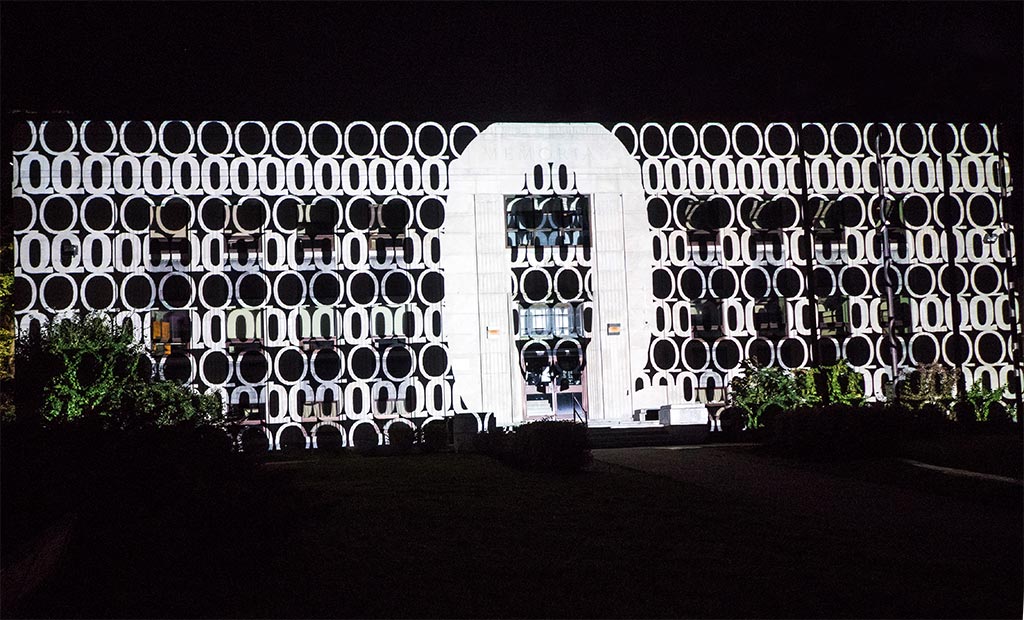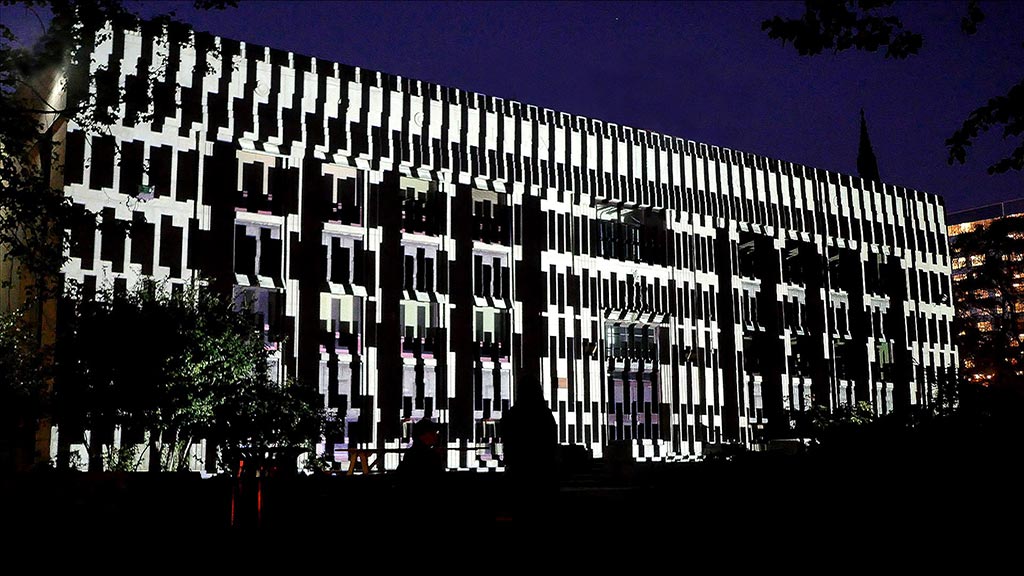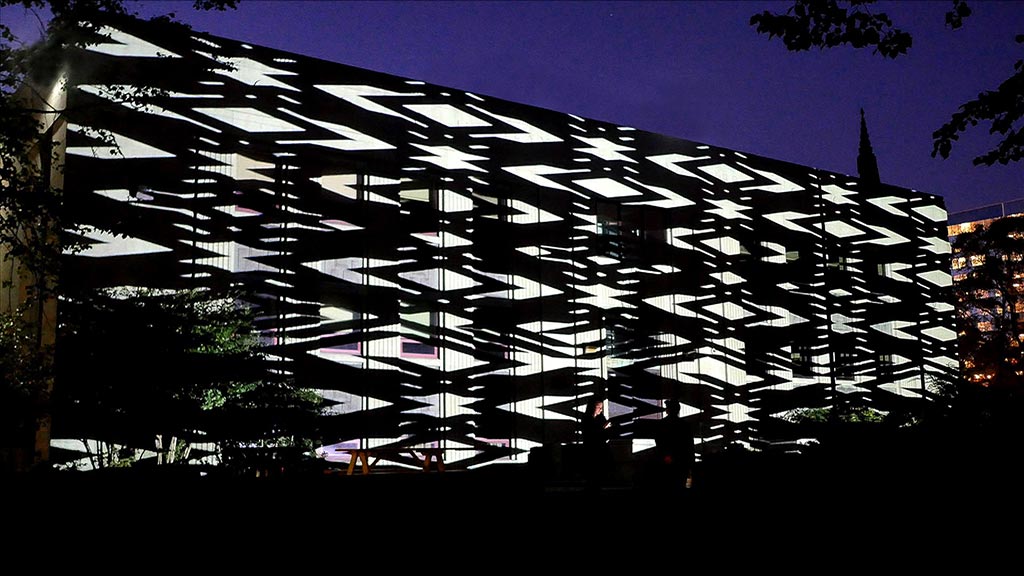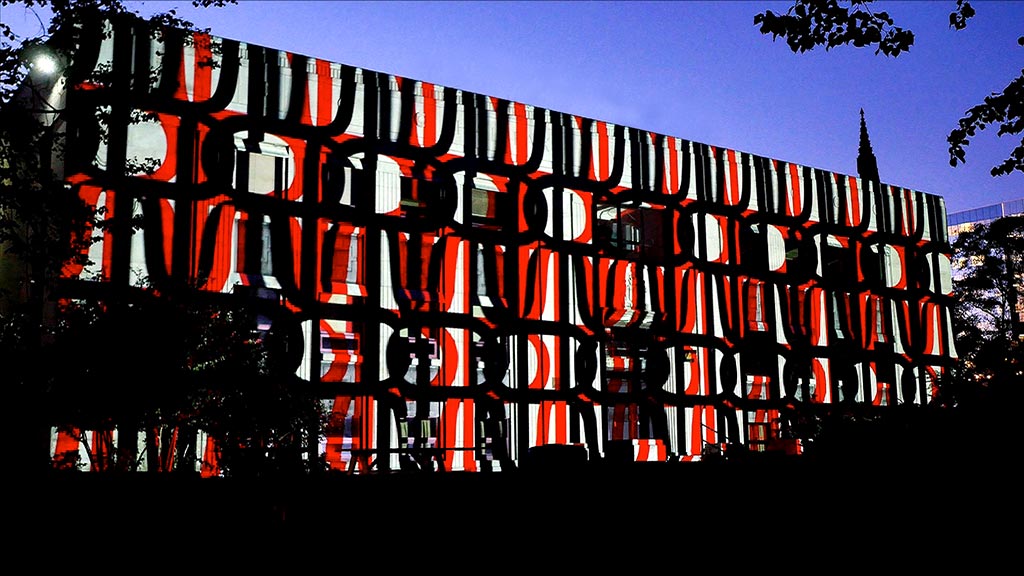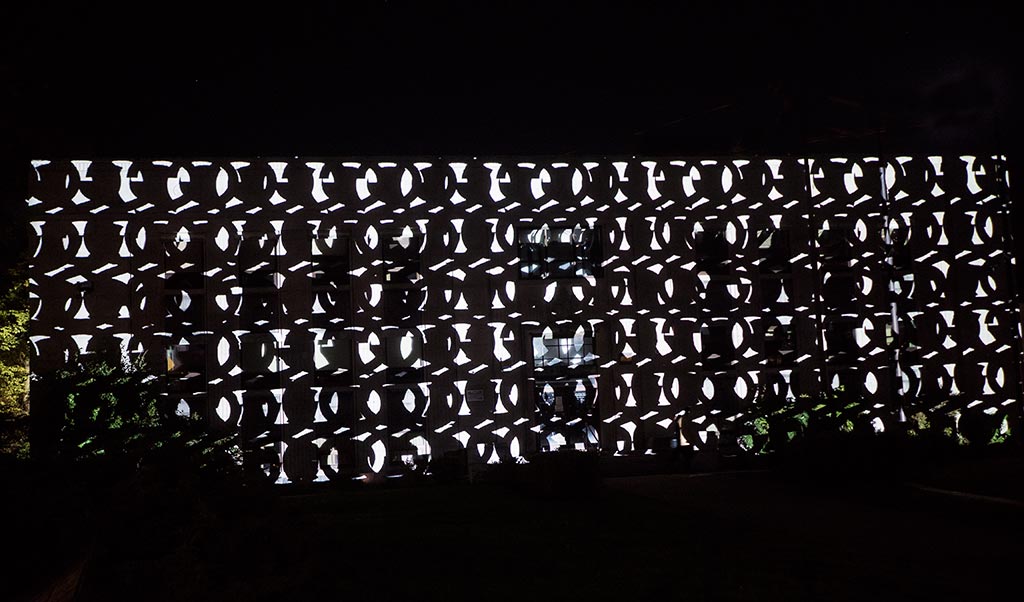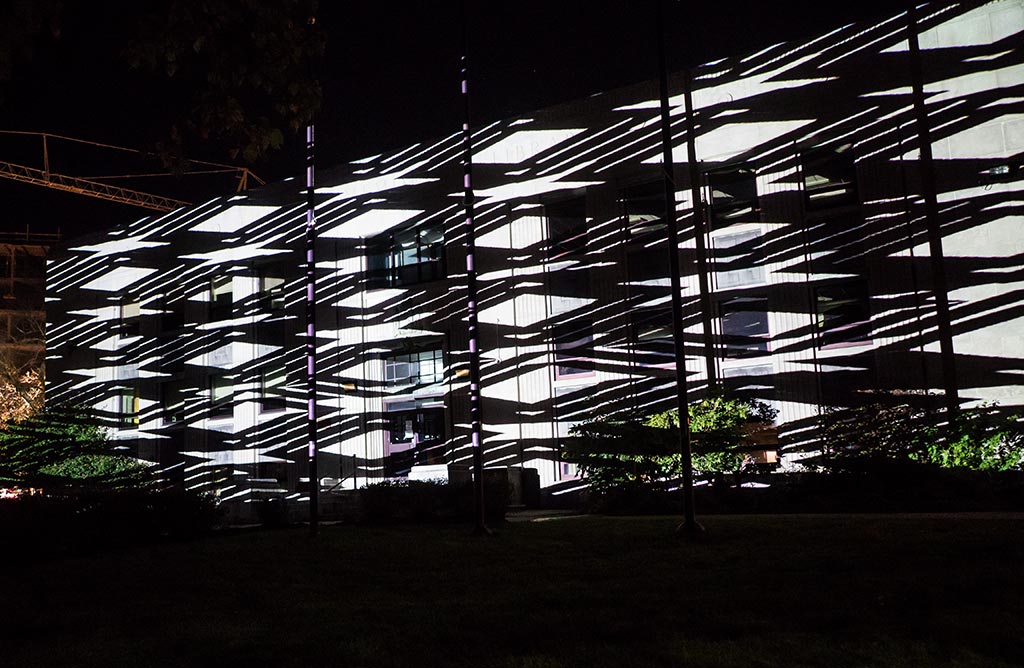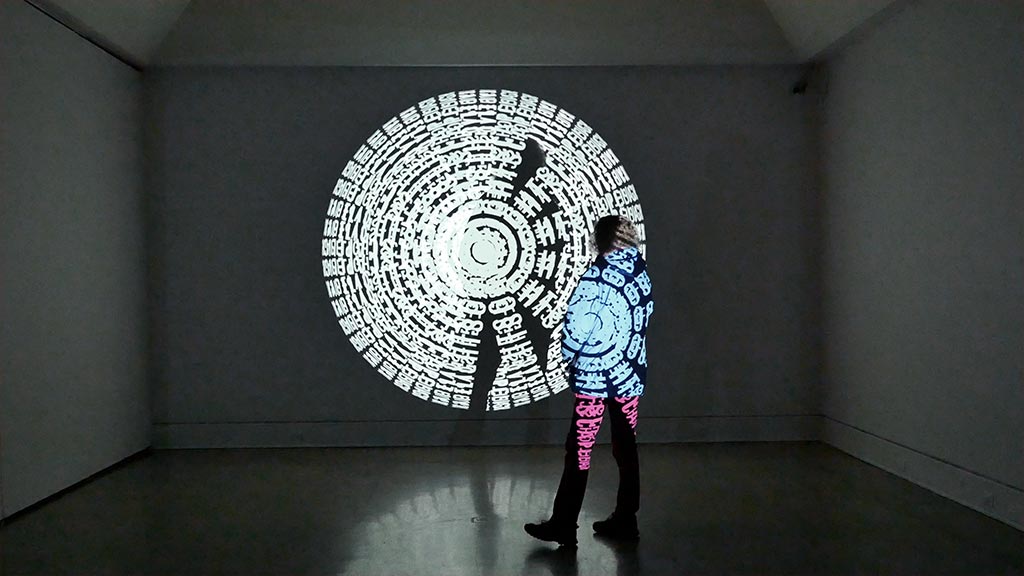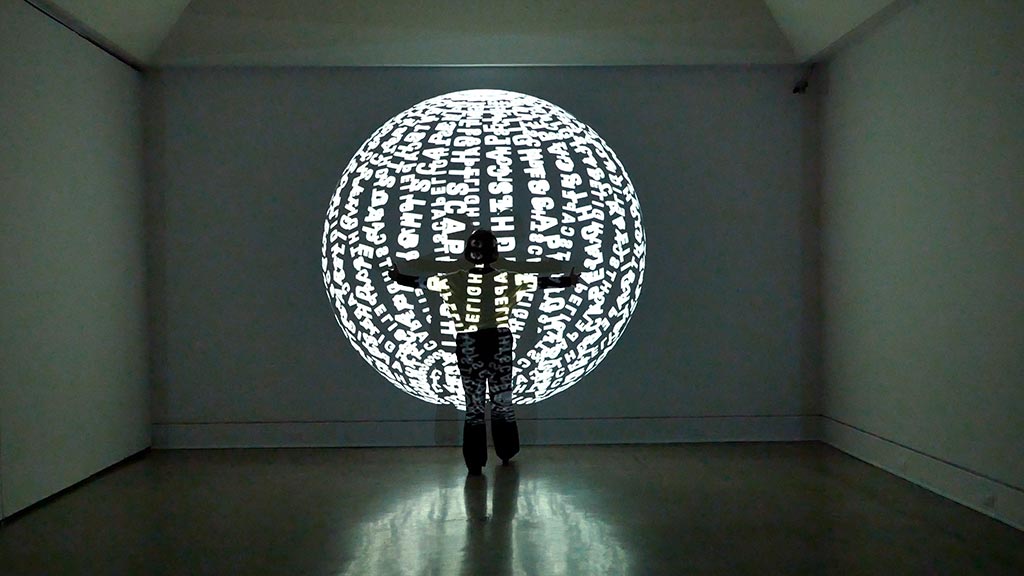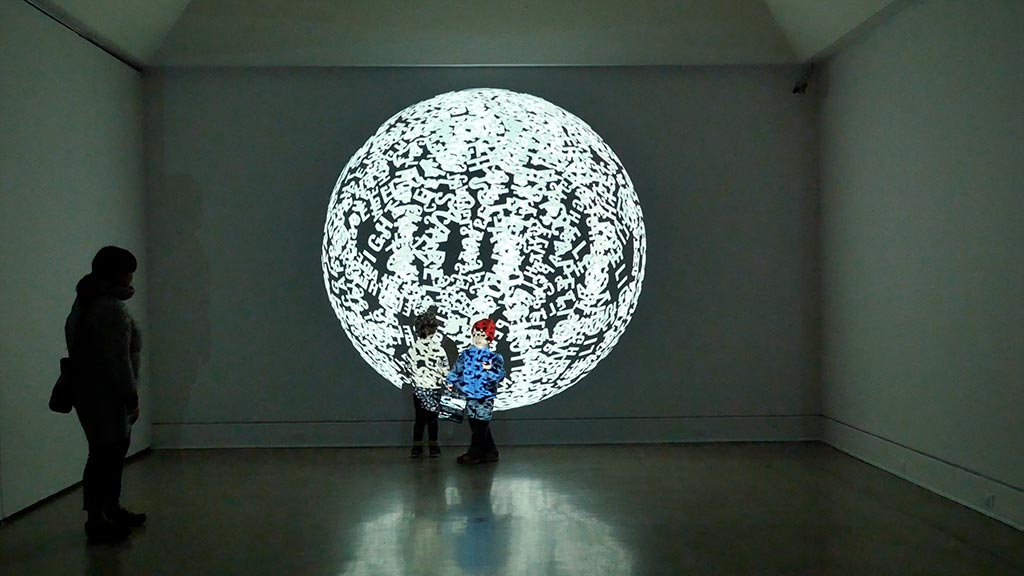CHARACTERS and LIGHTSCAPE — ILLUSION
//Responsive, International Light Art Project, Old Memorial Library und Art Gallery of Nova Scotia, Halifax, Kanada
The work CHARACTERS at the Memorial Library in Halifax uses only single letters as projection materials.
The sum of all kinds of texts, literatures, and documentation of our alphabetized script culture collected in a library is dissolved and leads back to phoneme–based components.
The graphemes (symbols) of our Latin script is rooted in the “Capitalis Monumentalis” and used only uppercase letters. This stone carved lapidary is a good example of how mathematical and design principles and proportions as they were applied in architecture, art and everyday life at its time, influenced the design of the written forms. Many of these design principles are universal and still valid today.
Each individual letter thus conveys not only a sound, but also a visual, individual impression through its form and shape. Each letter has its own personality, its own character. This shows especially when one frees the characters from their context by an ornamental play, such as duplication, twists or reflections. Then it becomes clear that, in addition to an infinite number of substantives, there are also infinitely many formal and ornamental possibilities to put together letters. The resulting images and pictorial notations formulate a language of their own which sparks a visual dialogue with its writing surface: the Memorial Library in Halifax.
LIGHTSCAPE — ILLUSION
The work was first shown in 2014 in the Scheinwerfer I exhibition at the Art Museum Celle with Robert Simon Collection. Since then it it has been repeatedly realized in different places partially as a single projection.
The neologism LIGHTSCAPE means the total light situation, the distribution pattern of light on an image. This artificial word that is often used as a product name for branded products (perfume, porcelain), in the lamp and lighting industry, photo art as well as computer animation, gradually becomes the keyword for light art and design and projection in public space.
The term ILLUSION derives from the Latin word illudere, a composition of the verb ludere (play) and the local preposition in. Its meaning ranges from throwing into the game to Play games with sb. up to intellectual game. The work LIGHTSCAPE — ILLUSION goes in for a visualized intellectual game about light as the source and basis of our visiual perception and reflects about the illusion of seeing. Formally starting point is the projected, set up serially in circled type term LIGHTSCAPE. The resulting disc and sphere typographies suggest perspective and three–dimensionality and provide lighting landscapes with different connotations. Light as a concept, as a phenomenon and medium is formally set in relation to associations such as kaleidoscope, rose window, globe, sun, iris, eye, atom, nucleus etc. and to the symbolic power of point, circle and sphere.
The special technique of two congruent superimposed projections includes the viewer and his shadow into the apparent three-dimensionalty of the projection and makes it part of the work.
LIGHTSCAPE — ILLUSION aligns with a series of works like Lichten (2004) or splendoris nocturni (2007), which do not refer to a specific space but deal in a laboratory and analytical way with the relationship of light and vision.
